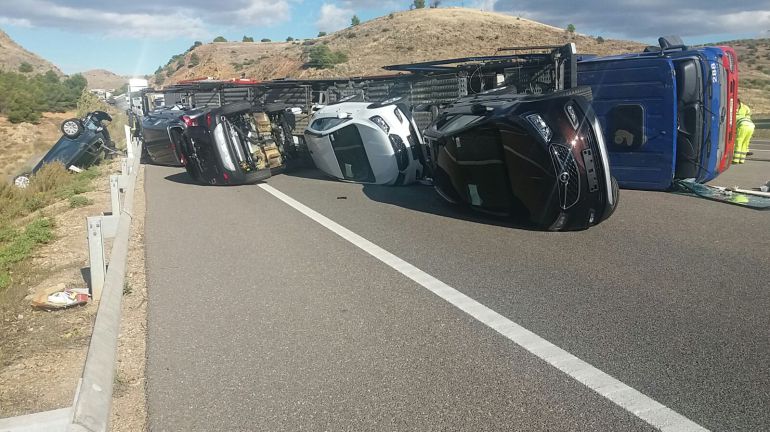Why does a truck overturn?
Many times we see or hear that a truck has overturned, and as manufacturers of hydraulic cylinders for trucks, we would like to give a brief overview.
An example of this was the last accident that took place in our Community, specifically on the A2 at Morata de Jalón. A lorry loaded with cars overturned on its right side while driving towards Madrid as it was going down the Morata pass.

Image of the Diputación de Zaragoza used to illustrate the news of the accident at km 262 of the A2.
Vehicle stability
The higher the centre of gravity of a truck at the same inclination, the easier it is to tip over.
Another aspect to consider is the width of the vehicle.
The so-called CENTRIFUGAL FORCE is concerned with the forces generated when cornering as a function of speed.
A good explanation is given by ANEP Prevention in its web site “Vehicle stability”:
“If the vehicle has a good grip, and we look at the truck from behind, we see that the truck tends to turn in the opposite direction to the direction of the curve, as the centrifugal force pulls the vehicle outwards. The centre of gravity also shifts to the opposite side of the curve, and if the centrifugal force is high, the truck will tip over.”
Road cant
One way to avoid overturning due to centrifugal force is to slightly camber the road by tilting it to the inside of the curve.
Thus, the sum of both forces is between the tyres, so we avoid rollover.
However, if we take the curve at excessive speed, we can also roll over. If the road is very steep and we stop the vehicle, we will see that, for example, with a partial load of liquids, the centre of gravity may shift towards the inside of the curve and tip over to the other side.
Thus,


